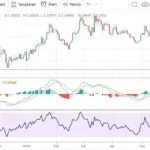For decades, gold and the US dollar have stood at the heart of global finance—two assets that often move in opposite directions during times of market stress. While both are viewed as safe havens, their relationship is far more complex than it appears. In 2025, with geopolitical uncertainty, inflation shifts, and diverging monetary policies shaping global markets, the gold versus USD dynamic continues to be one of the most important themes for traders and investors to understand.
1. The Traditional Relationship: Inverse but Not Absolute
Historically, gold and the US dollar share an inverse correlation. When the dollar strengthens, gold tends to weaken—and vice versa. This pattern exists because:
- Gold is priced in US dollars globally. A stronger dollar makes gold more expensive for holders of other currencies, reducing demand.
- In times of confidence in the US economy or rising interest rates, investors favor dollar-based assets over non-yielding gold.
However, this inverse relationship isn’t always consistent. In recent years, both assets have occasionally risen together during periods of extreme risk aversion, as investors sought safety from volatile equities and uncertain global growth.
2. Gold as a Timeless Safe Haven
Gold’s appeal as a safe haven stems from its tangible value and historical resilience. During geopolitical crises, inflationary periods, or banking instability, gold often attracts flows from investors seeking security outside the financial system.
In 2025, several factors continue to support gold’s safe-haven status:
- Geopolitical tensions: Conflicts in Eastern Europe and the Middle East keep risk sentiment fragile.
- Global debt levels: Rising government debt increases concerns about fiat currency stability.
- Central bank buying: Emerging market central banks continue to diversify reserves by adding gold, boosting long-term demand.
As a result, gold remains a favored hedge against both economic uncertainty and currency depreciation.
3. The US Dollar: The World’s Default Safe Haven
The US dollar, backed by the world’s largest economy and deepest capital markets, remains the primary global reserve currency. In periods of financial stress or market turbulence, investors flock to USD assets such as Treasury bonds for liquidity and security.
Key factors supporting the dollar’s role include:
- High interest rate environment: The Federal Reserve’s policy stance continues to make dollar assets attractive relative to other currencies.
- Global demand for liquidity: In crises, institutions and central banks prefer holding dollars for trade and settlement.
- Economic resilience: The US economy’s ability to outperform peers reinforces confidence in its currency.
However, the same strength that supports the dollar can weigh on gold prices—especially if real yields remain elevated.
4. The 2025 Landscape: Safe Haven or Risk Trade?
The balance between gold and the USD in 2025 depends largely on risk sentiment and central bank policy.
- If global risk appetite weakens, both gold and the dollar may strengthen, as investors seek safety.
- If markets recover and the Fed signals rate cuts, gold could outperform as real yields decline and the dollar softens.
- If inflation resurges, gold may regain its shine as a hedge, even if the dollar remains firm.
In essence, gold and USD are not strictly opposites—they can serve as complementary safe havens under different macro conditions.
5. How Traders Are Positioning
Forex and commodity traders are increasingly viewing the gold–USD dynamic as a risk barometer:
- Gold rising with USD falling suggests investors are hedging inflation or anticipating easier monetary policy.
- USD rising while gold falls often signals tightening liquidity and confidence in US assets.
- Both rising together typically reflects heightened geopolitical stress or systemic market fears.
Technical traders are also watching key levels closely:
- Gold resistance: $2,400 per ounce – a breakout could signal renewed bullish momentum.
- USD Index (DXY) support: 100.00 – a decisive break lower could favor gold buyers.
6. The Long-Term Outlook: Dual Safe Havens in a Shifting World
As the global financial system evolves—with de-dollarization discussions, BRICS trade settlements, and rising geopolitical fragmentation—both gold and the US dollar may retain, rather than compete for, their safe-haven roles.
- Gold offers stability outside the monetary system.
- The dollar provides liquidity within it.
For investors, the smart strategy may not be choosing one over the other, but balancing both—holding gold as a long-term store of value and USD assets for short-term protection during global turbulence.
Conclusion: Beyond the Binary
The “Gold vs USD” debate is not simply about which asset wins in times of crisis. It’s about understanding how and when each asset provides safety. In 2025, as markets navigate inflation uncertainty, shifting geopolitics, and central bank recalibration, both gold and the dollar remain essential tools for preserving capital.
For traders and investors, success lies in reading the macro environment—knowing when gold shines brightest, and when the dollar’s strength tells the real story.













